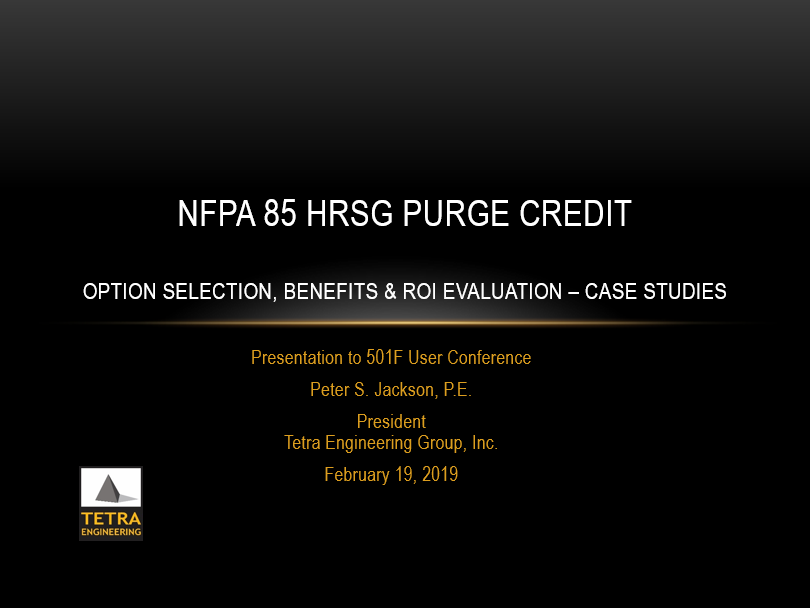Normal boiler and Heat Recovery Steam Generator Operation have required a complete purge of the boiler by fresh air before startup firing to remove potentially explosive fuels and other substances from the boiler/HRSG. For power plants in daily two-shift cycling (or more frequent starts) this not only adds time to the startup sequence but can impose significant thermal stresses on hot components exposed to cooler purge air.
Since the approval of a purge credit mode in NFPA 85 (2011) where the flow of air through the HRSG during shutdown can be credited as a purge, plants can operating without a startup purge with enhanced fuel systems and operating procedures. This paper will look at the impact of purge (and purge credit) on the thermal stress and fatigue lifetimes of HRSG operating with and without purge credit. Data and simulation results will demonstrate the range of fatigue life changes from implementation of purge credits as well as other operational impacts as seen in operating data.
The requirement for purge protects the Combined Cycle system from the hazards of fire and explosion but imposes performance and reliability challenges. In CCGT plants, startups are typically divided based on the temperature of key steam generation systems when startup steam bypass allows the steam turbines to be brought up to operating conditions at a different rate. The exact values vary from plant to plant but typically are:
For cold starts, the time required for purge adds to the total time required for starting the unit when demanded. This is an issue for warm and hot starts as well, but additionally purge puts relatively cold air flow through a warm or hot HRSG/Duct Work. This cold air flow cools the HRSG and Ducting resulting in lower metal and water temperatures and thus pressures. Figure 1 shows a typical purge of a modern drul type triple pressure/reheat HRSG after an overnight shutdown.

The full paper was published in the 2015 ASME Power and Energy Conversion Conference Proceedings and can be found here.
For more information about Purge Credit contact Dave Moelling dave.moelling@tetra-eng.com (Americas) or Mark Taylor mark.taylor@tetra-eng.com (EMEA).
Stay up to date and refer to our large collection of technical white papers and articles